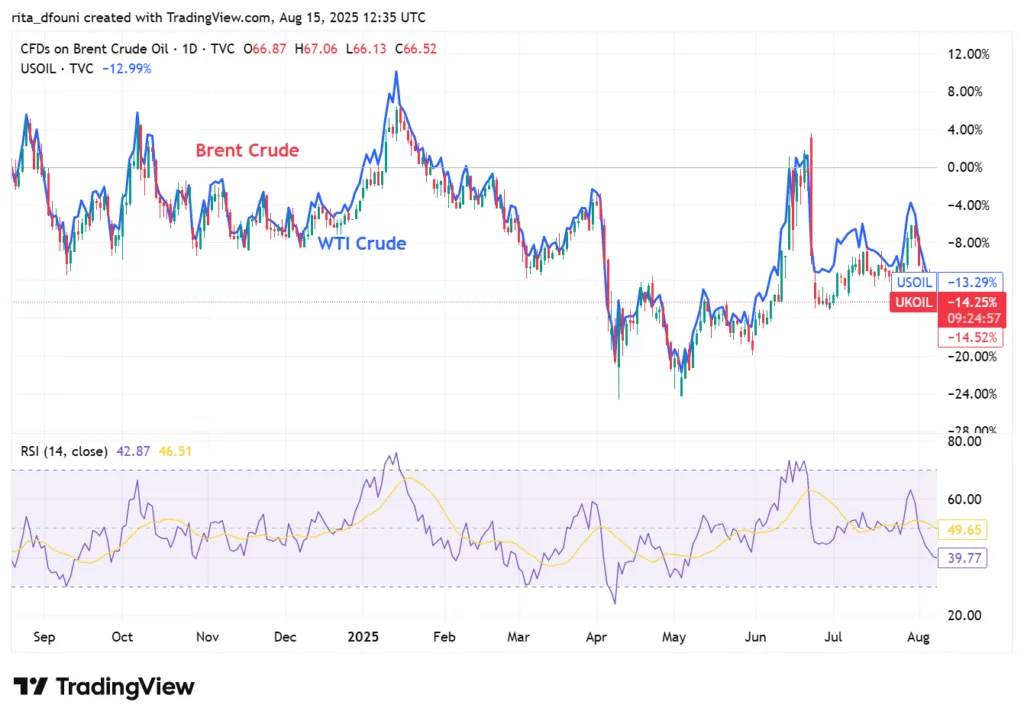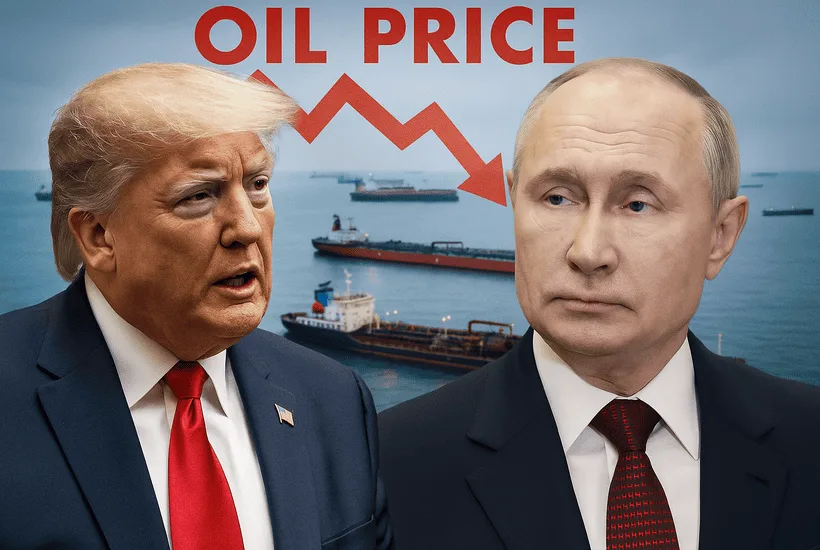- Oil prices fall ahead of the Trump-Putin summit in Alaska, with markets watching for progress on a Ukraine ceasefire.
- Weak Chinese economic data raises concerns over fuel demand despite higher year-on-year refinery throughput.
- Bank of America projects an average global oil surplus of 890,000 bpd through mid-2026, adding to bearish sentiment.
Oil prices declined on Friday in anticipation of a crucial meeting between U.S. President Donald Trump and Russian President Vladimir Putin in Alaska, where the agenda is likely to center on achieving a ceasefire in Ukraine. Market participants are closely monitoring for indications of advancement, as any easing of sanctions on Moscow could have significant effects on global supply.
Brent crude futures decreased by $0.49, representing a 0.7% decline, bringing the price to $66.35 per barrel as of 1105 GMT. Meanwhile, U.S. West Texas Intermediate (WTI) crude experienced a drop of $0.58, or 0.9%, resulting in a price of $63.38. For the week, WTI is projected to decline by 0.7%, whereas Brent is expected to achieve a slight gain of 0.4%.

Brent Crude Oil (UKOIL) daily performance prices have decreased in anticipation of the Trump–Putin summit, indicating geopolitical uncertainty and weaker economic data from China.
Newsletter
Get weekly updates on the newest crypto stories, case studies and tips right in your mailbox.
Geopolitical strains and supply forecast
The Alaska summit has the potential to be crucial for oil markets.President Trump has indicated that Russia might be open to resolving the conflict, yet he cautioned about the possibility of secondary sanctions on countries buying Russian crude if no advancements are made.Analysts observe that a ceasefire could result in heightened Russian production, altering supply dynamics.
“The market is closely monitoring the situation to determine if a ceasefire will occur. The anticipation of a ceasefire leads to expectations of increased Russian production,” stated Giovanni Staunovo, a commodities analyst at UBS.
Economic issues arising from China
The introduction of downward pressure has been indicated by new data from China, which reveals a deceleration in economic momentum. Growth in factory output has decreased to an eight-month low, and retail sales have recorded their slowest expansion since December, heightening worries regarding fuel demand.
Although Chinese refinery throughput increased by 8.9% year-on-year in July, it has fallen from the peak levels observed in June. Additionally, the rise in oil product exports further implies a lack of robust domestic consumption.
Market Surplus Projections and Policy Risks
Forecasts of a growing oil surplus also weighed on sentiment. Bank of America widened its estimate for the global oil surplus to an average of 890,000 barrels per day from July 2025 through June 2026, citing higher OPEC+ output. The International Energy Agency similarly warned this week that the market appears “bloated” following recent production increases.
With geopolitical negotiations, Chinese demand signals, and supply forecasts converging, traders are bracing for heightened volatility. The outcome of the Trump-Putin meeting could determine whether oil prices face further downside from surplus pressures or rebound on renewed supply constraints.













